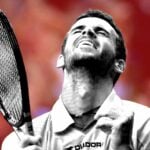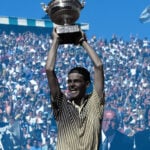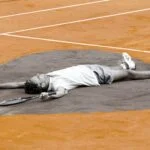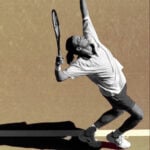May 16, 1999: The day Gustavo Kuerten prevented Pat Rafter from becoming world No 1
Every day, Tennis Majors takes you back in time to relive a tennis event which happened on this specific day. On May 16, 1999, Pat Rafter was denied the chance to become world No 1 by Gustavo Kuerten
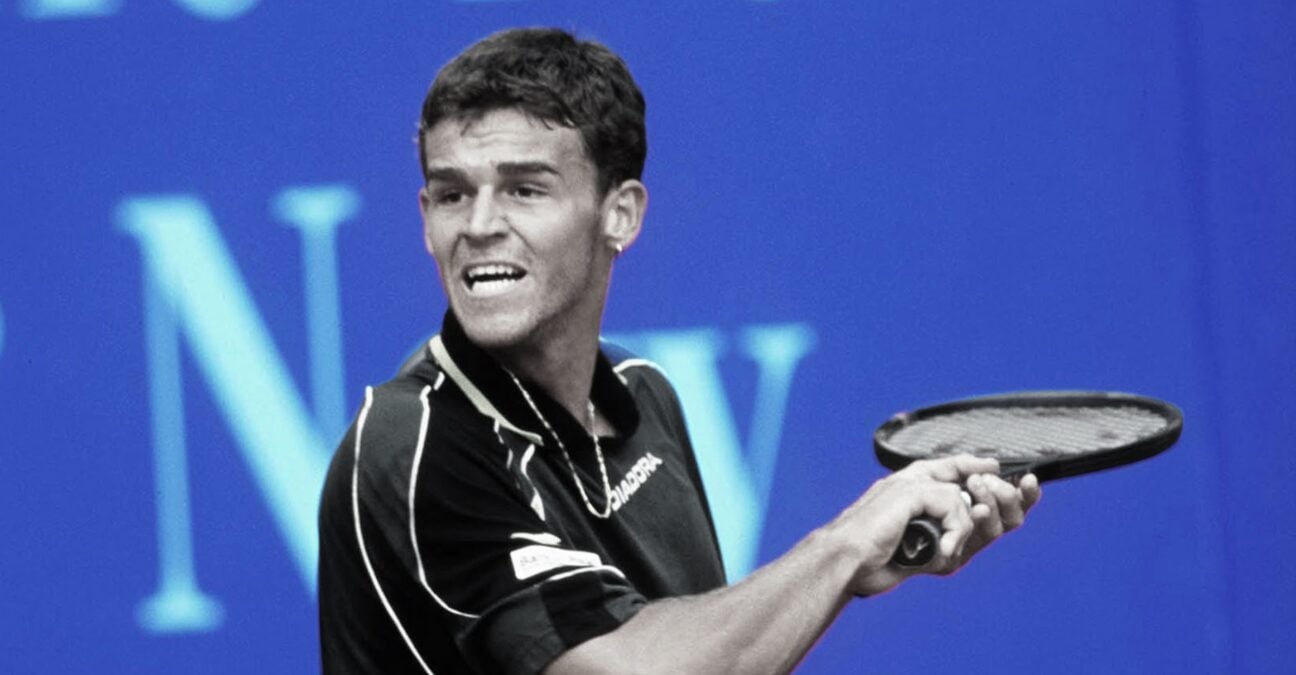 Gustavo Kuerten On this day 16_5
Gustavo Kuerten On this day 16_5
What happened exactly on that daY?
On this day, May 16, 1999, Brazil’s Gustavo Kuerten defeated Pat Rafter, from Australia, in the final of the Italian Open. By doing so, he prevented the Australian from reaching the world No1 spot.
Pat Rafter, double US Open defending champion, had been competing for that spot for over two months with Pete Sampras, Carlos Moya and Yevgeny Kafelnikov. It was a rare opportunity for the Aussie, who was not dominating the game and was not tipped to ever achieve the world No 1 spot.
The players involved: Pat Rafter and Gustavo Kuerten
• Patrick Rafter: The two-time US Open champion
Born in 1972, Rafter had turned pro in 1991. The Australian had not achieved any remarkable results in his early career, claiming only one title before 1997, at the 1994 Manchester Open. He had reached his best ranking of No 21 in 1994 and had spent most of his time outside the top 40.
In 1997, his career suddenly took off when he reached the semi-final in Roland-Garros, his run ending only by the hands of Sergi Bruguera (6-7, 6-1, 7-5, 7-6).
A few months later, after reaching two finals, in Indianapolis and Long Island, he claimed the US Open title to everyone’s surprise. It was only his second title ever!! On his way, he had defeated Andre Agassi (then ranked No 63, 6-3, 7-6, 4-6, 6-3), world No 2 Michael Chang (6-3, 6-3, 6-4) and Greg Rusedski in the final (6-3, 6-2, 4-6, 7-5).
In 1998, his disappointing results in the first half of the season made John McEnroe criticize him as a one-shot Grand Slam winner and Sampras expressed that he would need a second Major title to be called a great player.
As a response, in summer 1998, Rafter would claim the titles in Toronto and Cincinnati (edging there…Sampras in the final, 1-6, 7-6, 6-4). Riding the wave of confidence, Rafter would conquer a second US Open crown, defeating Pistol Pete a second time (6-7, 6-4, 2-6, 6-4, 6-3) before he beat fellow Australian Mark Philippoussis (6-3, 3-6, 6-2, 6-0) in the first all-Aussie Grand Slam final since 1970.
The Aussie was described by Bud Collins as “a humble man known for a gracious manner on the court, great generosity and a gentlemanly demeanour at all times”.
• Gustavo Kuerten:
Born in 1976, Kuerten had made himself famous in 1997, when, ranked No 66 and unknown to the general public, he claimed the title in Roland-Garros, defeating the previous champions on his way (Thomas Muster, Yevgeny Kafelnikov and Sergi Bruguera in the final, 6-3 6-4 6-2). Not only was it his career first title, but it was even his first final on the tour.
Kuerten’s game, relying on a great first serve and an impressive one-handed backhand, topped with great drop shots, made him a natural clay-court player. Finishing 1997 as world No 14, he had trouble reaffirming his status as a top player in 1998 and his results on hard courts were disappointing.
Although he gained in confidence during the clay season, he was defeated in the second round of the French Open by the young Marat Safin, who would reach the quarter-finals, in five sets (3-6, 7-6, 3-6, 6-1, 6-4).
The Brazilian started the 1999 season as world No 23, and, although some thought his 1997 magic had short-lived, Guga was confident in his abilities. Reaching the semi-final in Indian Wells (lost to Moya, who became world No 1 that day), Kuerten then delivered an impressive Davis Cup performance on clay against Spain, defeating Carlos Moya and Alex Corretja, before claiming his first Masters 1000 title in Monte-Carlo. The curly-haired Brazilian was turning into a favourite for the Roland-Garros crown.
The place : Stadio del Tennis di Roma
The Italian Open had been held in Rome since 1935, at the Foro Italico, a massive sporting complex originally designed to support an Italian bid to host the 1940 Olympics. One of the Masters 1000 events, it is still one of the most prestigious clay-court tournaments in the world. Almost all of the best players in history have set foot on the courts of the famous Stadio del Tennis di Roma venue.
While Rafter had never made it past the second round in Rome, Kuerten had achieved one of his best results there in 1998, reaching the semi-finals where he was defeated by Marcelo Rios (6-0, 7-5).
The facts: Kuerten prevailed
The 1999 Italian Open final between Gustavo Kuerten and Patrick Rafter was particularly important to both players. For both the participants of the Italian Open final, the stakes were particularly high on the May 16, 1999.
At the start of the season, Guga was ranked No 23 and it seemed that his 1997 French Open could stay a one-shot performance, until, in March, the Brazilian rediscovered his magic. A few weeks before the Italian Open, he had prevailed in Monte-Carlo, the start of the clay-court season. Now in Rome, he was fit, his serve was sharp, and his backhand was precise.
Apart from Karol Kucera who pushed him to a third set in the quarter-finals (3-6, 6-4, 7-5), the Brazilian had passed all his opponents in straight sets, including world no.1 Yevgeny Kafelnikov, defeated 7-5 6-1 in the round of 16. He was turning into the best clay-court player in the world and claiming the title here would make him the favorite at Roland-Garros.
Rafter had a very different goal that day. Prior to this week, he hadn’t won two matches in a row since the Australian Open, where he had been beaten by Thomas Enqvist in the third round.
Nonetheless, he somehow found himself contending for the world No 1spot. In fact, Sampras, who had dominated the tour for six years, had played very scarcely so far in 1999, and, as no one else was truly above the pack, Rafter, as the 1998 US Open champion, had now the opportunity to take his seat.
His two rivals in that quest were Carlos Moya and Yevgeny Kafelnikov. The Spaniard had already reached the top spot in March, before Pistol Pete claimed it only two weeks later. On May 3, it was Kafelnikov’s turn to become world No 1.
Now, the Australian, after a great week in Rome, where he had defeated Andre Agassi in the round of 16 (6-4 7-6) and clay-court specialist Felix Mantilla in the semi-final (6-3, 7-5), was one match away of writing history as the first ATP No 1 from Down Under since John Newcombe in 1974.
Unfortunately for the Aussie, Kuerten was too big of a puzzle for him that day. As Rafter struggled with his first serve, Kuerten put a lot of pressure on his volleys with great returns and accurate passing shots. Guga was serving well and rallied Rafter around the court with his backhand variations. His natural clay-court game was one step ahead of Rafter’s abilities on dirt and Kuerten won in three sets, 6-4, 7-5, 7-6. Pat Rafter’s bid for world No 1 had been denied.
“He put pressure on my volleys, he put pressure on my serves,” Rafter said after the match. “I tried everything, but he was killing me from the baseline. I needed something to turn, something to go my way, because he was always in control.“
What next? Kuerten and Rafter both go on to become world No 1
Gustavo Kuerten, jumping to the eighth spot on the ATP rankings, was now the favourite for the upcoming French Open. He would fall in the quarter-finals, surprised by Andrei Medvedev (7-5, 6-4, 6-4), but he would remain the best clay-court player on the tour for a while, and would eventually claim two more titles in Roland-Garros in 2000 (beating Magnus Norman, 6-2, 6-3, 2-6, 7-6) and 2001 (edging Alex Corretja, 6-7, 7-5, 6-2, 6-0), the year he drew his famous heart on the Court Philippe Chatrier.
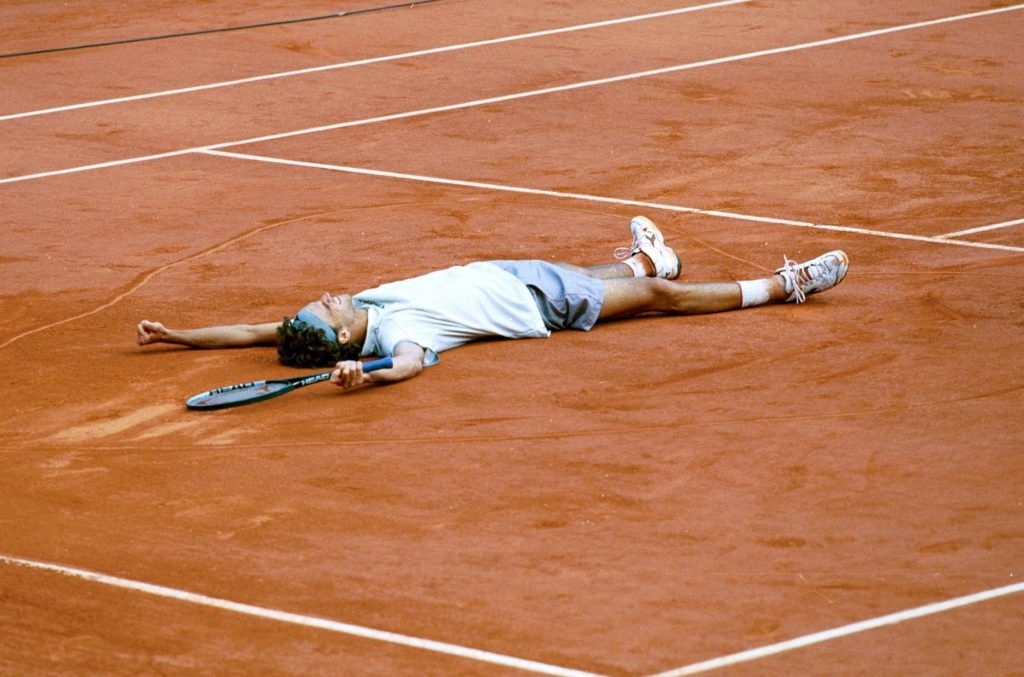
In 2000, after an amazing triumph at the Masters Cup, where he defeated both Andre Agassi and Pete Sampras on fast indoor courts, he would end the year as world No 1. Suffering from a serious hip injury, he would not be able to defend his 2001 Parisian title in 2002, and the rest of his career would be a long struggle against this injury that he would never overcome. Eventually, he would retire from the game in 2008, after two years of inactivity, and a final appearance in Roland-Garros.
Rafter would eventually claim the world No1 spot, on July 26, 1999, although he would only stay at the top for one week, marking the shortest stint at No 1 in tennis history.
He would not win any more Grand Slam events after the 1998 US Open but would reach two consecutive finals in Wimbledon, defeated in 2000 by Sampras (6-7, 7-6, 6-4, 6-2), and in 2001 by Goran Ivanisevic, in an epic five-set final (6-3, 3-6, 6-3, 2-6, 9-7).
Although the entire Australian nation waited for him to claim the title in Melbourne Park, Rafter’s best attempt there would be a semi-final in 2001 (lost to Agassi 7-5, 2-6, 6-7, 6-3, 6-3). At the end of 2001, his shoulder would need surgery. He would never come back on the tour afterwards and Rafter would announce his retirement from the sport in 2003.
